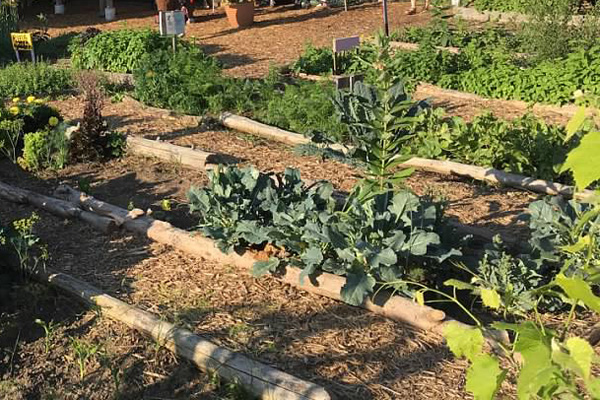An Unbiased View of City Blooming
An Unbiased View of City Blooming
Blog Article
Things about City Blooming
Table of ContentsSome Known Details About City Blooming Everything about City BloomingNot known Facts About City BloomingThe Single Strategy To Use For City BloomingAbout City Blooming
Fascinated in expanding food for sale in the City of Chicago? Thinking about starting an area yard? Adjustments to the Chicago Zoning Regulation enable agricultural uses like community yards and city farms in several parts of the city. Below is a list of frequently asked concerns relating to the regulations and guidelines that farmers should think about when preparing a metropolitan farming project.
The zoning amendment does not change any type of various other codes managing composting, building permits, purchasing or leasing City owned property, service licenses or environmental contamination. There are existing codes that manage these problems and they stay in complete impact and may apply to your project. Neighborhood yards are generally had or handled by public entities, civic companies or community-based organizations and kept by volunteers.
Urban ranches expand food that is intended to be marketed, either on a nonprofit or for-profit basis. As a result of their industrial objective, urban farms call for a company permit. Yes. An area yard is enabled to sell excess generate that was grown on site if the sales are accessory or secondary to the yard's key objective defined over.
A Biased View of City Blooming
Composting is enabled however only for plant product that is created and made use of on site. The quantity of garden compost product can not go beyond 25 cubic yards at any offered time according to the standards in 7-28-715 of the City's Municipal Code. Yes. Because the soil at a lot of brand-new yard websites requires amending, compost, soil, timber chips, or other materials can be obtained to create or enhance the growing space - landscaping.

If a structure permit is needed then the hoophouse will certainly be considered an accessory structure. You can figure out even more concerning the structure permit needs by calling the Division of Buildings. The 25,000-square-foot dimension limitation is meant to stop a single community yard from dominating a provided block or diminishing the block's existing domestic or commercial personality.
The restriction does not use to yards located in Public Open Room (POS) areas. Can there be greater than one area yard that is 25,000 square feet on a solitary block? Yes. The size limitation applies to private gardens, not to specific blocks. No. Fence is not called for, however, yards that have big parking locations might be needed to set up fencing or various other landscaping functions.
The Buzz on City Blooming
B1 & B2 areas need that all business usage activities be carried out inside your home. Is secure fencing needed for urban farms? Fencings might be needed, along with landscaping and screening, for certain vehicle parking locations and outdoor job or storage space areas depending on place and the particular activity taking location.
Yes. Urban ranches require building authorizations and zoning authorizations before construction. Various other types of city evaluation may be required depending on specific structures, tasks, size, landscaping, licensing, public heath and stormwater administration concerns. A number of these demands are identified in the project design or permitting process, however, the applicant might be responsible to independently identify specific licenses or permits that may be called for.
Yes. The kind of certificate is established by what is happening at the website. The Department of Service Affairs and Consumer Defense can help identify the specific sort of business certificate that's called for. Yes. Off street vehicle parking is required for a lot of business tasks in Chicago. The called for variety of garage is based on the variety of staff members functioning on website and not the square video of the growing room.
Some Of City Blooming

Yes. A metropolitan farm can offer compost product produced on website, nevertheless, the procedure needs to comply with the regulations in 7-28-715 of the Chicago Municipal Code. Yes. Aquaponic systems are permitted indoors on metropolitan farms in several zoning districts. Nevertheless, a zoning review and structure license is required in order to install frameworks or systems and a business license is called for as explained above.
Up to five hives or colonies of honey might be maintained as an accessory usage. However, beekeepers need to sign up with the Illinois Division of Farming. To find out more regarding the suggested zoning modification you might call the Department of Housing and Economic Growth, Bureau of Planning and Zoning at 312.744.8563.
, which takes place in country areas at the edge of suburbs.
What Does City Blooming Do?
It can involve a motion of natural farmers, "foodies" and "locavores", that seek to form social networks founded on a shared values of nature and neighborhood holism. These networks can create by method of official institutional support, coming to be integrated right into regional town as a "transition community" motion for sustainable urban development.
The much more direct access to fresh veggie, fruit, and meat products that may be know through metropolitan farming can improve food safety and security and food safety and security while i was reading this lowering food miles, leading to lower greenhouse gas discharges, thereby adding to climate modification mitigation. Several of the initial evidence of metropolitan agriculture originates from Mesopotamia.
Report this page